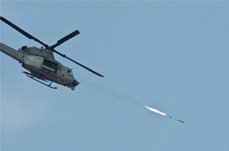Today I have released an updated and enhanced Public Defence Capability Plan (the DCP).
The DCP update (Update 2) provides key information for the Parliament, Defence industry and the Australian public on Defence’s Capital Acquisition Plans.
The enhancements to the DCP follow a review of the DCP commissioned by the Government from the independent Australian Strategic Policy Institute on ways to make the DCP a more useful and more transparent document.
The return to a ten-year planning horizon provides a longer term view of Defence’s capability requirements.
The updated DCP contains 140 capability projects or phases, with a total budget of over $150 billion in 2010 prices.
It includes a number of new features:
- information on initial operational capability, final operational capability, initial materiel release and life of type where that information is available;
- more details on the opportunities that may be available to the Australian defenceindustry;
- indicative timing for major scheduled project activities;
- detail on any project related infrastructure or facilities; and
- improved cost estimate information.
The increased information will give the Parliament, industry and the public a better understanding of Defence’s capability and acquisition plans. It will also help industry better prepare for its engagements with Defence and better plan its future investment and skilling decisions. This will help Defence to best achieve the critical task of equipping, supporting and sustaining our sailors, soldiers, airmen and air women.
It is important to note that the DCP changes over time as Defence priorities and strategic circumstances change and new projects enter the DCP, or projects are approved and as a consequence removed from the DCP.
It is therefore the case that changes will occur in coming years. Projects may be accelerated, deferred, or diminished as circumstances change. While the DCP provides the best information available at the time of publishing, some of the information in the DCP, including in relation to approval schedules is indicative.
This DCP is no exception, and since the February 2010 electronic update:
- four projects or phases have been approved by Government and therefore removed from the DCP;
- two projects have been cancelled; and
- seven projects have been brought forward, 19 projects have had their indicative schedules deferred and nine projects provide more precise information on their schedule.
In addition to the four projects or phases approved and removed from the DCP, the Government has approved an additional 16 projects (including first or second pass) since February 2010.
The total value of projects approved since February 2010 is nearly $2 billion.
There is also an element of over-programming built into the DCP. Over-programming is designed to provide flexibility and to ensure that best use is made of available funding in the development of individual projects. Over-programming means that project timing may change.
The contribution of Australia’s local defence industry is crucial to our defence and national security. The Minister for Defence Materiel and I propose in early 2011 to meet with key Defence industry groups, including the Australian Industry and Defence Network (AIDN), the Defence Council of the Australian Industry Group and the Australian Business Defence Industry Unit.
2011 promises to be a demanding year for project approvals and I look forward to Defence and Industry working together to progress the plans outlined in the DCP.
Press release
Ministerial Support and Public Affairs,
Department of Defence,
Canberra, Australia

 von
von 